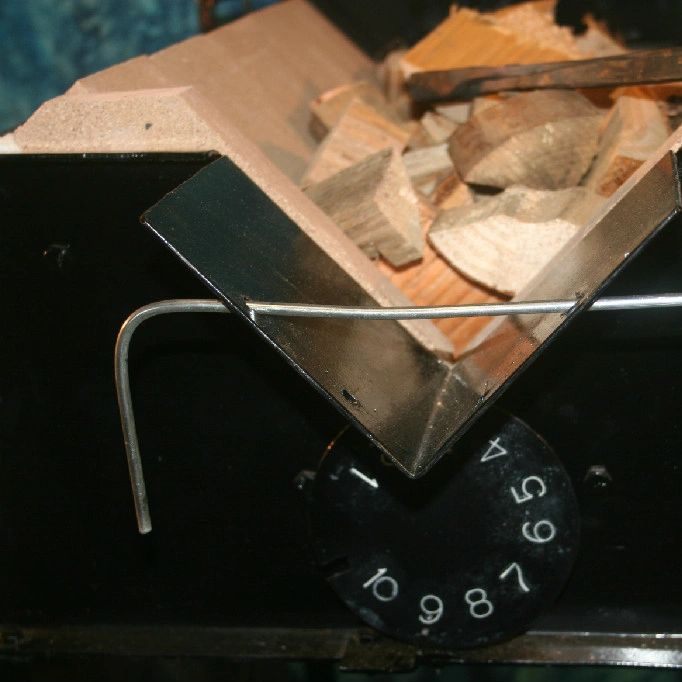Tips and Tricks for Blacksmithing with Wood

When forging with solid fuel, whether coal or wood, it is the oxidizing of the partially combusted fuel that provides the real heat. Coal turns to coke and wood turns to charcoal. With either, you can stop the combustion as it carbonizes, or you can continue burning it. The trench shape of the Whitlox Wood-Fired Forge is ideal for using wood fuel straight from the raw wood form directly to the charcoal stage, as gravity concentrates the coals.
What kind of wood is best for forging?
Any kind of dry wood will work: scrap pallets, small branches, firewood, old boards, etc. Avoid wood that may have been exposed to chemicals like pressure treated woods or pallets used for hazardous materials. While some smiths swear by hardwood charcoal, we encourage you to try out softwoods when working with raw wood fuel. Your optimal fire is one that is uniformly carbonized, and softwood is less dense, becoming charcoal to the core more readily. Softwoods have less mineral content and so make less ash than hardwood. While our forges are easy to clean out, it can be less convenient and more messy to work with hardwoods because of this ash. However, the whole idea behind our forge is using what you have on hand: experiment with your locally available wood. If it is mostly hardwood, try cutting it finer.
Preparing Wood
As you prepare the fuel for your forge, consider the amount of surface area of the wood. A large chunk of wood does not have as much exposure to oxygen as the same piece will when it is split smaller. The more surface area you have, the faster your wood will become charcoal and make a hot fire. We have found that 3” cubes work well, and so do sticks 2x2x6”. If you arrange the wood parallel to each other, it rolls down into the vee and stays at a good density. The most important things to remember are keeping the fuel dry and reasonably uniform in size.No charcoal briquettes
The charcoal briquettes you can buy at the grocery store are not a good option for forge fuel. They contain non-carbon fillers and binders which lower the maximum potential temperature of your fire. Opt instead for the products that are marked lump charcoal and still resemble wood.
Blast it!
Be aware that controlling the airflow to your fire is a necessary skill to develop. It is obvious that more oxygen makes your fire burn hotter and faster. It may be less obvious that a strong blast of air across your steel is actually cooling it, or excess oxygen causing scale to form. The fullsize Whitlox Wood-Fired Forges give you the option to open or close the holes of the tuyere with the dial on the front of the forge, for easy control of the blast. With the Mini Forge, you can shift the fuel out of the way and use tongs to drop a bolt in a hole to block some of the air flow if needed.
Take a scientific approach
Experiment with placing your work piece at different levels of the fire and observe the differing amounts of scale that form as well as how hot it is. Make sure you have fire both above and below your steel--insulating your work is especially important when forge welding. Make a deep fire, and use something to reflect heat back down—a piece of kaowool, or wood, or a scrap of metal, creating a little furnace. As you become familiar with how your locally available wood best burns, and learn the attributes of different kinds of steel, you will gain greater and greater control of your results.Building a hot fire is not difficult, and there are as many “right” ways to blacksmith as there are smiths out there. We encourage you to grab a hammer and tongs and dive in.
The Whitlox Wood-Fired Forge reduces the hassle of fire management so you can focus on the craft!
